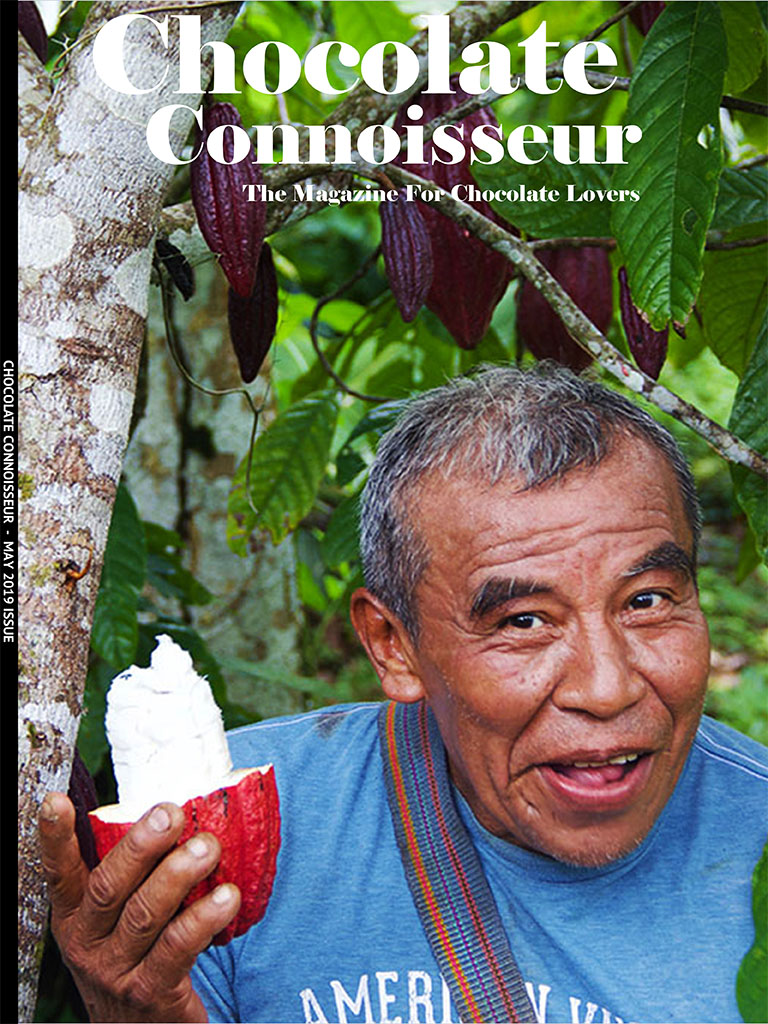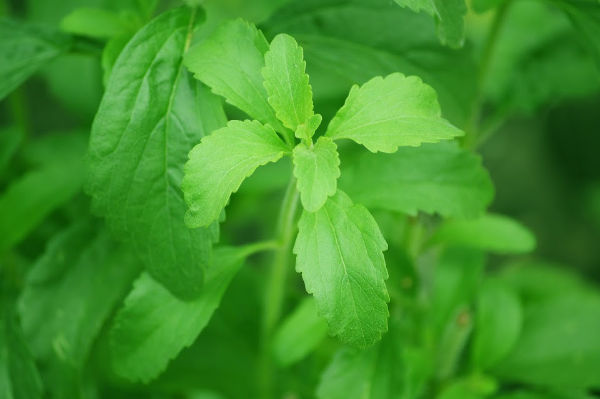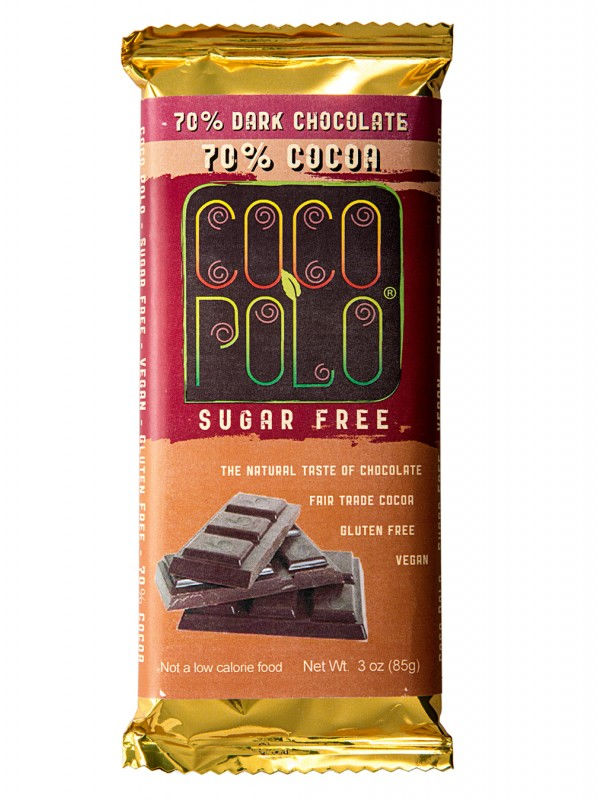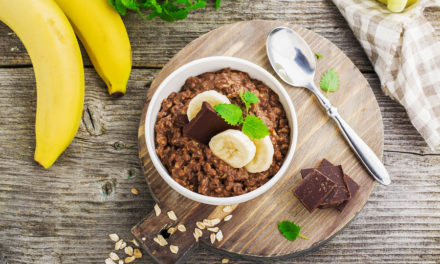The Healthy Bean:
Stevia – a Natural Sweetener?
by Rene’ Zimbelman
Remember when organic foods seemed a bit foreign and exotic? Or when meals from a box, loaded with starch, were the norm at dinnertime? For most of us, these are concepts from the past, and we’re continually moving full steam ahead into better health. One of the most effective ways to improve our health is a no-brainer — reduce our sugar intake.
Even the most healthy chocolate will typically contain up to 25% sugar, so the kind of sugar used in our chocolate matters. The darker the chocolate, the less sweetener content, but a 70% dark chocolate bar contains around 25% sugar, or other type of sweetener, on average.
As chocolate connoisseurs of one level or another, we should be open to trying any healthy sweetener varieties out there of course, and although there are several on the market today, for the sake of avoiding information overload, we’ll focus on the one with the lion’s share of sugar reduction: stevia. Expect an in-depth, Chocolate University on the rest of the sweetener market in the not-so-distant future, however…
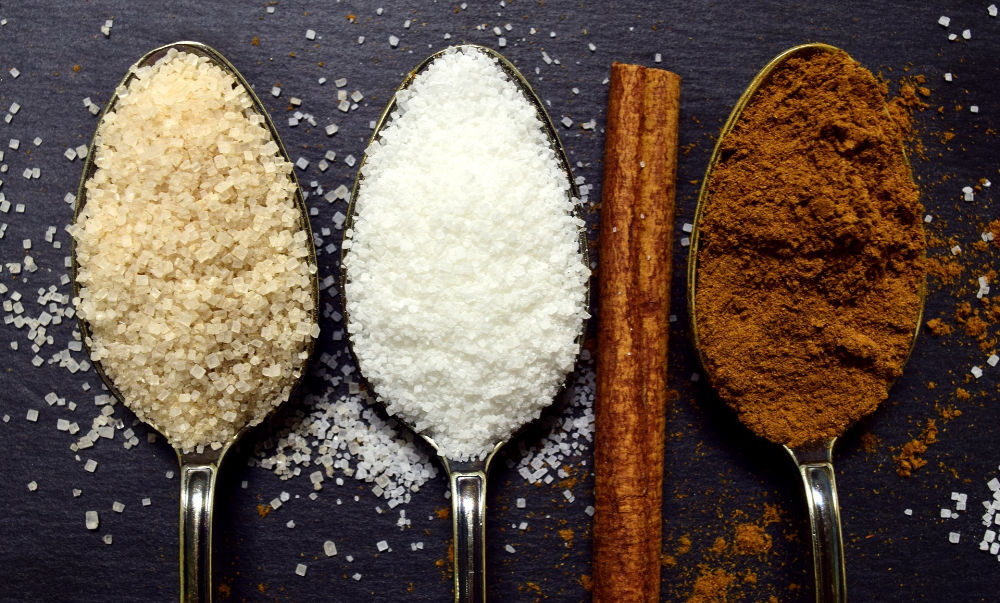
A Stevia Close-Up
In last month’s issue, we spotlighted Lily’s Sweets and their stevia-sweetened chocolate, which inspired me to zero in on alternative sweeteners for Chocolate University here. Stevia has long sat atop the sugar alternatives list, courtesy of its natural origin and completely sugar-free make up. Taste, however, well… that’s a completely different story. To each his or her own, and for me personally, stevia works much better in some foods and beverages than others. So let’s dive in and take a much closer look at this age-old sweetener…
First off, Stevia, also known as stevia rebaudiana, commonly referred to as sweetleaf, is a bushy shrub, part of the sunflower (Asteraceae) family, along with chrysanthemums and several others. There are well over 200 different species of stevia, and the plant is most commonly used as a non-nutritive sweetener and herbal supplement.
Originally native to Paraguay and Brazil, stevia now exists in many other countries as well, including Japan and China. In fact, China currently sits as the leading exporter of stevia products. In addition to the extract found on our grocery shelves, you can also purchase a stevia plant at some garden centers for home growing, too — especially good to know since stevia also serves some medicinal purposes, as it has for centuries.
Medicalnewstoday.com tells us stevia is 200 times sweeter than sugar in the same concentration, yet it typically requires about 20 percent of the land and far less water to provide the same amount of sweetness as other mainstream sweeteners. Before you think it’s as simple as replacing sugar with stevia in a chocolate bar, however, think again. It’s actually much trickier than a simple replacement, since there are two functions in sugar: first, of course, it sweetens, but sugar also adds bulk to the chocolate.
We learned from Lily’s that stevia contributes to most of Lily’s sweetness, while erythritol (a sugar alcohol often used as a low-calorie sweetener) and the natural fibers from inulin (another sugar alcohol) and dextrin (glucose) contribute to rounding out Lily’s flavor profile and mouth-feel. Adding these fiber blends can make it more expensive to create stevia-sweetened chocolate, however, so don’t expect the chocolate to necessarily sell for less than a sugar-sweetened bar.
Stevia rebaudiana, native to Brazil and Paraguay
Breaking it Down
So how is sweetness extracted from the plant? Well first, stevia extraction targets these specific steviol glycosides:
- stevioside
- rebaudiosides A,C,D,E, and F
- steviolbioside
- dulcoside
Stevioside and rebaudioside A (reb A) are the most plentiful of these components.
Although the glycosides are considerably sweeter than sugar, they don’t raise the blood insulin levels, and manufacturers can go up to 80-90% less sugar and reduce the caloric content by 30%.
Now, in case I’m losing you here with all this talk of glycosides, hang in there, there’s a point to breaking down this information. Interestingly, there are different opinions on how “natural” stevia is, and the drama tends to circle around the actual process, going from plant to ready-to-consume extract. According to medicalnewstoday.com —
“The steviol glycosides are extracted through a process of harvesting the leaves, then drying, water extraction, and purification. Crude stevia, the processed product before it is purified, often carries a bitter taste and foul smell until it is bleached or de-colored. It takes roughly 40 steps to process the final stevia extract.”
Part of the process also includes the use of alcohol, and yes, forty steps sounds like quite a bit of processing, not exactly the favorite buzz word of the natural food world! Let’s take a look at stevia actually in practice to help clear up the controversy a bit…
Coco Polo & Stevia
Coco Polo, a chocolate company in New Jersey, U.S., uses stevia as their sweetener. They launched way back in 1996 to help people with dietary challenges, and their mission is “to improve high quality chocolate without added sugars to be a taste and lifestyle preference.” Then there’s this, per the company’s website —
“Coco Polo is approved by the Feingold® Organization, which was created to help people with dietary challenges. Coco Polo and Feingold (www.feingold.org) partner with Roche® (www.roche.com) to help treat the “Whole Diabetic Customer” by introducing them to a new expectation of chocolate without added sugars, that is… it tastes delicious.”
Coco Polo’s 70% regular chocolate bar consists of Chocolate Liquor, Erythritol, Inulin (from chicory root extract), Cocoa Butter, non-GMO Soy Lecithin, Vanilla, and Reb A (the stevia glycoside).
This is very similar to Lily’s, whose ingredients vary somewhat, but their original dark bar contains Unsweetened Chocolate, Inulin, Dextrin, Erythritol, Cocoa Butter, Milk Fat (rBST Free), Organic Soy Lecithin, Vanilla and Stevia Extract (glycoside not specified, however).
Coco Polo’s website touts their chocolate as non-gmo, sugar-free, gluten-free and all natural…and it’s the last bit, “all natural”, that one may find intriguing, given the controversial point they note next…
The Stevia Controversy
Coco Polo gives us a little history on their website on how stevia grew in popularity over recent years, and it doesn’t sound pretty (and for the record, I found this exact bit of history across several different sources while researching, so I expect it’s perfectly legitimate) —
“In 1991 the FDA refused to approve this substance for use, due to pressure from makers of artificial sweeteners like Sweet n’ Low and Equal (a one-billion-dollar industry).
But in 2008, the FDA approved the use of rebaudioside compounds that were derived from the stevia plant by Coca-Cola (Cargill) and PepsiCo – hmmm doesn’t that sound suspicious? Not until a major food company got involved did stevia become legal, and only after it had been highly processed using a patentable chemical-laden process… so processed that Truvia (Coca-Cola’s branded product) goes through about 40 steps to process the extract from the leaf, relying on chemicals like acetone, methanol, ethanol, acetonitrile, and isopropanol. Some of these chemicals are known carcinogens (substances that cause cancer), and none of those ingredients sound like real food, do they?
The whole leaf stevia that you can grow in your backyard (and has been used for centuries in countries like Brazil and Paraguay) remains a non-approved food additive by the FDA. However, rebaudioside A (the stevia extract) that was approved by the FDA has not been used for centuries, and long-term human health impacts have not been studied and are still unknown.
The sweetener/sugar industry wields powerful influence over what is ultimately approved by the FDA, and this is just another example where they are influencing decisions that don’t make sense. How can a chemically-derived extract be deemed safe in processed food [while] a plant from mother nature [is not]?”
This does make one speculate about the approval process involved with stevia, just as we’ve speculated about other things like GMOs in our food supply. And it’s brave of Coco Polo to put this information out there, when they do, in fact use Reb A as their stevia extract.
Medicalnewstoday.com tells us that multiple global regulatory bodies have determined high-purity stevia extract is safe for consumption by the general population within the recommended levels, including children. Governing bodies established an Acceptable Daily Intake (ADI) of 4 milligrams per kilogram (kg). These organizations include the Food and Agriculture Organization of the United Nations (FAO), the World Health Organization (WHO), and, of course, the FDA.
Still, after reading this take on how stevia has become more popular, it does leave me feeling more skeptical about possible health concerns associated with processing its glycosides for food consumption. How about you?
Depending on which report you read regarding studies conducted on processing glycosides for food consumption, you’ll either learn the process is safe or that it hasn’t been tested nearly enough, an all too common refrain over the last several decades.
More Controversy in the Mix
Vani Hari (a.k.a. The Food Babe) adds this point to the controversy in her article: Food Babe Investigates Stevia: Good or Bad?:
“The 40-step patented process used to make Truvia should make you want to steer clear of this stevia product alone, but there are two other concerning ingredients added (not only to Truvia but other stevia products as well). First, erythritol is a naturally occurring sugar that is sometimes found in fruit, but food manufacturers don’t actually use the natural stuff. Instead they start with genetically-engineered corn and then go through a complex fermentation process to come up with chemically pure erythritol.”
As noted earlier, erythritol belongs to a class of compounds called sugar alcohols. Food producers use many different sugar alcohols, including xylitol, sorbitol and maltitol. As mentioned above, Erythritol is included in both Coco Polo and Lily’s chocolate bars, and both companies state on their websites their ingredients are non-gmo, so we’ll assume this includes the erythritol in their chocolate bars (unlike what Vani references above).
“Natural” Flavors
The second ingredient Vani mentions in her article is unspecified “natural flavors”, often added to powdered and liquid stevia-sweetened products. Such products often develop a metallic taste.
She tells us –
“Manufactured natural flavor is contributing to what David Kessler (former head of the FDA) calls a “food carnival” in your mouth. This makes it difficult to stop eating or drinking because the flavors they have synthesized will trick your mind into wanting more and more.
When companies use manufactured flavor, they are literally “hijacking” your taste buds one-by-one; that’s why I recommend putting products that contain “natural flavors” back on the shelf.”
Bottom line here is – it isn’t just the stevia in your chocolate you need to keep an eye on; be aware of the other ingredients combined to make processed stevia palatable, including erythritol and other “natural” flavors.
Garden Grown
Aside from large-scale labs processing stevia, there are smaller labs, too, helping increase farmers’ profits. Take a look at this first video where this option is explained further.
Now, if you’re interested in growing stevia in your garden, (after all this talk of lab-processed stevia), check out the second video below. Contrary to how medicalnews.com claimed earlier that unprocessed stevia often carries a bitter taste and foul smell until it is bleached or de-colored, the woman in the video below doesn’t mention stevia tasting strange, she only mentions how food may appear green.
It makes me wonder if that unpleasant taste derived from stevia comes from the plant itself or from the 40-step extraction and purification process. If you decide to grow your own stevia and follow her steps below, please let us know your own taste buds’ final verdict.
Stevia Health-Related Pros and Cons
Dig around yourself, and you can expect to find a wide range of stevia health-related pros and cons, depending on which studies you read. Here are just a few we uncovered over at medicalnewstoday.com, starting with the pros –
“Benefits include allowing people with diabetes to eat a larger range of foods, decreasing weight gain, the kaempferol found in stevia can reduce the risk of pancreatic cancer by 23 percent, and certain glycosides in stevia extract have been found to dilate blood vessels. The glycosides can also increase sodium excretion and urine output.”
And a few possible cons as well:
“Some people have allergic reactions to steviol glycosides that are not extremely pure. Stevia is part of the Asteraceae plant family, which includes daisies, sunflowers, and chrysanthemums. Anyone with allergies to these plants or others in the family should avoid stevia products. Possible gastrointestinal side effects are possible, too.”
If you feel safer using stevia in leaf form or tinctures made from leaf form, wellnessmama.com recommends Stevia Leaf or Sweet Drops Stevia.
And, if you find you just don’t like the taste of stevia, whether raw or processed, well then, we’ve come full circle regardless! Thankfully for all chocolate connoisseurs, the world of natural sweeteners extends far beyond this plant, and we’ll delve into that in the future, so stay tuned…
REFERENCES
https://fdc.nal.usda.gov/fdc-app.html#/food-details/169592/nutrients
https://www.medicalnewstoday.com/articles/287251.php
https://www.cocopolo.com/stevia/
https://www.100daysofrealfood.com/stevia-food-babe-investigates/
https://www.healthline.com/nutrition/erythritol#section6
https://www.healthline.com/nutrition/erythritol#section2
https://wellnessmama.com/1482/stevia-safe-or-healthy/

